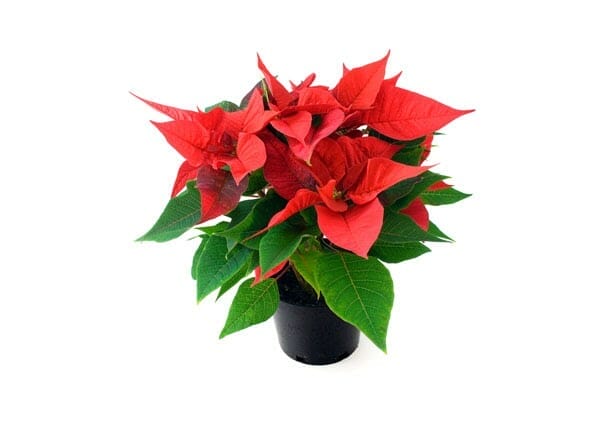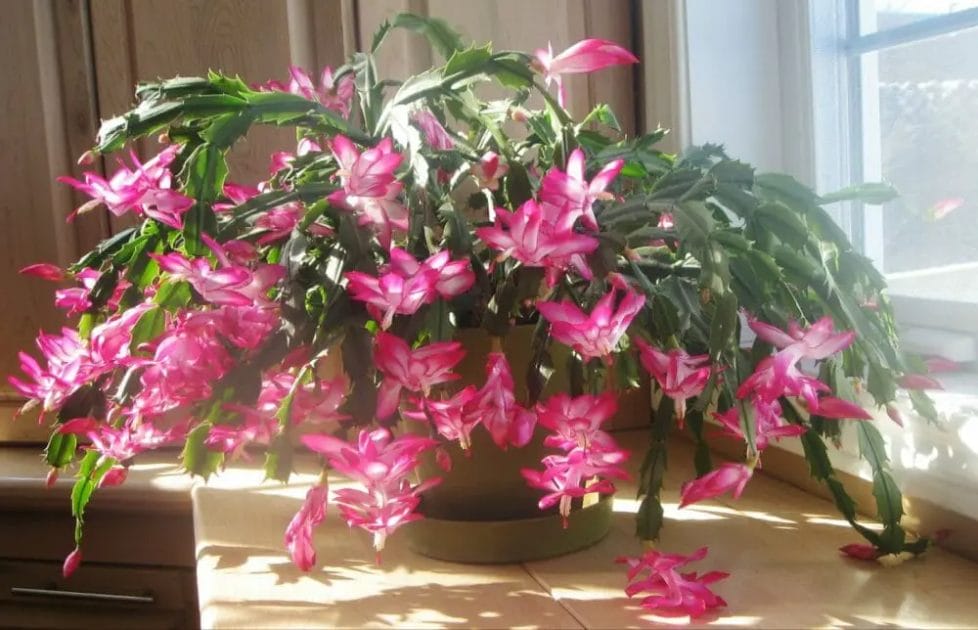Winter is just about here – which means Christmas is coming. Perhaps you miss the warm days when you were outside, digging in your garden and planting your favorite fruits and veggies.
Even though the gardening season has ended, it’s still possible to enjoy greenery and flowers in your home.
Christmas plants/flowers bring a special touch to the holidays, and they’re not likely to end up in the compost pile or the trash at the end of the month.
According to the experts, the holiday plants we’ll talk about here will live for years, as long as the conditions are right and they are taken care of. Like any other garden, these plants need the proper TLC to keep them thriving through the season and beyond.
The plants/flowers we’ll talk about here are some of the best flowers to give on Christmas Day- that is, as long as the person receiving them likes plants. Of course, keep in mind that some are fussier than others, so they require a bit of extra effort to keep alive.
In a rush? Here are our top picks:
So, without further ado, let’s talk about the best flowers to give on Christmas Day.
Poinsettia

The poinsettia is almost as much of a classic as Christmas movies. When choosing a poinsettia plant, make sure to choose one with tiny yellow flowers at the center of the colored leaves.
These are known as cyathia. If the plant is already shedding pollen or the yellow flowers have dropped, it’s not likely to last through the season.
Caring for Your Poinsettia
When you are bringing home your poinsettia (or transporting it to gift someone), you’ll want to cover it- especially if temps are in the 20s or lower.
Avoid leaving the plant in your vehicle while you’re out running errands.
When dry to the touch, you’ll want to add water – but not too much. Keep in mind, overwatering is the most common way to kill them.
When you get the plant to its destination, you’ll want to remove the covering on the pot- or at least poke some holes in it; this will help ensure that it’s not sitting in water.
When watering, place it in your sink and water sparingly. Then, allow it to drain completely before moving out of the sink.
Keep/Toss
Of course, it’s your decision whether you keep or toss the plant at the end of the season – but if you opt to keep it, know that it’ll take some work to get it to re-bloom the following season.
To encourage flowering, you’ll want to place it in a bright window after the holidays.
Then, after April 1, remove the bracts or colored leaves and shape as necessary by pinching the tips until the end of July/beginning of August. Using a standard fertilizer, feed every two weeks.
In September, move it to a room that only gets natural light during the day and no artificial light after the sun goes down.
In October, move it back to your common living space and hope for the best.
Orchid
Orchids are delicate looking, but they’re not nearly as fragile as you might think, and, with a little TLC, they will bloom for several months.
Some experts even say they will bloom into the spring!
Caring for Your Orchid
Be sure to provide your orchids with plenty of bright, indirect light, and keep in mind; they typically prefer cooler temps indoors. Sudden temperature changes can cause buds to drop off.
Water once weekly until the water drains out of the bottom of the pot.
Keep/Toss
You definitely want to keep your orchids after the season. Place them in a window facing the east, south, or west.
Feed with specially formulated orchid fertilizer. Water regularly, but during the summer, allow the leaves to dry out or wrinkle to trigger new buds. Once a new stem has formed, stop fertilizing, but start watering once again.
Christmas Cactus

Christmas cacti are so beautiful; they might be in competition with the beauty of the ornaments on your tree.
Experts say that these are one of the sturdier holiday plants and have been known to last for decades. Several species bloom at different times of the year, including Easter and Thanksgiving.
Caring for Your Christmas Cactus
Your Christmas cactus should be placed in a bright window. If you notice any flower buds dropping before opening, it could be that the temps are too warm or the soil is too dry.
The plant should be watered when dry but not allowed to sit in water. Christmas cacti are succulents, so the pads get soft/mushy if they are overwatered. The pot should be checked every 7 to 10 days.
Keep/Toss
This plant should definitely be kept, not tossed. If you want the plant to flower the following year again, bring it indoors for approximately three weeks in late summer/early fall and before temperatures drop into the mid-40s.
These plants prefer being pot-bound, so you won’t need to transplant them for several years. Fertilize once a month from April to October.
Cyclamen
This is a cool-season plant that can tolerate temperatures as low as the 40s, thus being popular Christmas flowers.
Provided with the right conditions, these plants are known to bloom for more than eight weeks.
Caring for Your Cyclamen
It would help if you placed your cyclamen in a medium-diffused, not bright light. To prolong flowering, you’ll want to avoid putting in warm drafts.
Additionally, take the time to remove any spent flowers and yellow leaves from time to time.
When watering, place in a saucer of water and allow to sit for 15-20 minutes. Then, remove the plant. Don’t splash water on leaves.
Keep/Toss
At the end of the season, feel free to toss this plant. It is pretty challenging to get them to rebloom.
Frosty Fern
These tiny, fern-like plants tinged with white are new to the holiday plant scene. They’re often found at high-end grocery stores and nurseries.
They can be placed on a desk or used as a centerpiece on a dining room table. Just looking at them will make it feel more like Christmas.
Caring for Your Frosty Fern
It would be best if you placed your frosty fern in low/medium light. Since they do enjoy humidity, they do pretty well in terrariums.
The soil should be kept slightly moist, and the water you use should be room temperature, not cold. They should be watered from the base by placing them in a saucer of water, allowing them to absorb for 15 minutes, and then removing the plant.
Keep/Toss
These plants should be tossed at the end of the season because they are pretty fussy and often die before the season is over anyway.
Amaryllis
Amaryllis are exotic-looking and will bloom approximately 4 to 6 weeks after the bulbs are planted. Some of them bloom before the foliage comes in.
Caring for Your Amaryllis
This plant should be placed in bright light because low light will cause the plant to wither and eventually die. To keep the plant growing upright, the pot should be rotated every few days. Make sure to keep the soil moist – but avoid drowning it.
Keep/Toss
This plant can be kept at the end of the season.
After the flowers have faded, you’ll want to cut the stalk but make sure to keep the leaves to replace the nutrients in the bulb.
Once the danger of frost has passed, the plant can be placed outside in a shaded area but must be moved indoors in a garage or basement in late summer/early fall.
Cut off yellow leaves and completely ignore the plant until November. Then, you can resume watering the plant and begin the growing cycle once again.
Rosemary

Often, this plant is shaped to look like a Christmas tree. The fresh pine scent can be pretty refreshing, and you can take clippings from it to bring a delicious flavor to your roasts and stews.
Caring for Your Rosemary
This plant should be placed in the west or south-facing window because it craves light and will drop leaves in low light.
Check on the pot every few days to ensure the soil remains moist.
The most common mistake people make with rosemary is that they don’t water it enough.
Keep/Toss
This plant should be kept at the end of the season and moved outdoors as soon as the danger of frost has passed- which is typically around May.
Using a slow-release pellet fertilizer, feed your plant every few months.
Allow it to grow naturally; you don’t have to keep it shaped to look like a Christmas tree unless you really want to.
Conclusion
Plants make a great Christmas gift, as long as the person you’re getting it for someone who likes plants and are willing to put in the effort to keep them alive.
If you’re buying for someone that doesn’t like plants, you might want to reconsider.
However, the plants listed here all make great gifts, and most of them can be kept alive for some time with the proper TLC.








